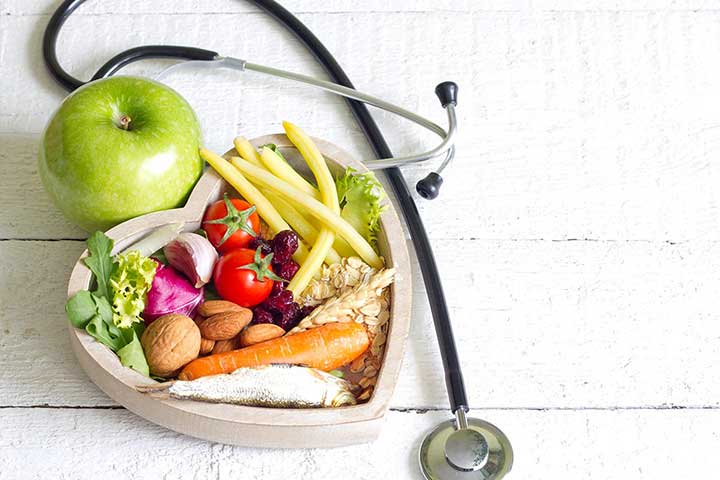Although it is described as “one of society’s greatest achievements,” with the aging population, cancer incidence is expected to accelerate rapidly, as 50% of cancer occurs within this age group.(1)
Nutrition therapy is a crucial component of cancer care. Early and continuous nutrition management is necessary to avoid malnutrition, as this is associated with poor clinical outcomes.(2) Often, the elderly already face chronic comorbid conditions, such as high blood pressure, heart disease, lung disease, diabetes, kidney disease, bone disease and arthritis, further complicating their care.(3)
With the natural aging process and disease, there are a number of factors that contribute to under-nutrition. Older adults experience changes in body composition such as a decrease in lean body mass around age 50, bone loss for women after menopause and around age 65 for men, and increase in fat mass. Furthermore, cancer treatments are associated with nutrition-related side effects, weight loss, anorexia, and malnutrition. This makes the elderly cancer population extremely nutritionally vulnerable.Working to optimize their diets during cancer treatment while supporting the nutritional management of pre-existing comorbid conditions is clearly vital to their health and longevity.
How aging impacts diet

Aging involves functional, emotional, cognitive, physical and socio-economic changes, all of which can impact diet and nutrition. Some physical changes that the elderly may experience are decrease in organ mass, blood flow to organs, and function of renal, cardiovascular, respiratory and immune systems. The aging process also causes changes in fat tissue, lean body mass and bone strength. Cognitive changes may also occur, which can affect the management of medications, appointments, food and meals, and maintaining self-care. Oral conditions are prevalent in the elderly, especially xerostomia (dry mouth), which affects 30%t of those 60 years or older and 40% of those 80 years or older.(4)
Xerostomia can cause mouth sores, mucositis, and oral pain. Also, elderly patients often wear dentures or have poor dentition, which may independently cause changes in diet, requiring soft or easy-to-chew foods. In additional to physical changes, emotional or social concerns may affect the elderly such as loss of family members, changes in resources with retirement, loneliness, etc. Many elderly cancer patients also experience disability, frailty, arthritis, or pain with mobilization which can further contribute to a lack of independence and self-care. All of these age-related conditions and physical changes put the elderly at higher risk for weight loss, poor oral intake, infection, and provide additional challenges during cancer treatment. If these are not addressed and accounted for, nutritional intake can become insufficient to support the individual’s nutrition needs.
Specific challenges for elderly cancer patients
Elderly cancer patients who have pre-existing comorbidities along with a cancer diagnosis often have additional challenges. In developed countries, 25%of adults have at least two chronic conditions, and over 50% of adults have three or more chronic conditions.5 This is often referred to as “multimorbidity.” Common health concerns are arthritis, heart disease, respiratory disease, Alzheimer’s, osteoporosis, diabetes, and influenza and pneumonia. The number of chronic conditions an individual has is correlated with an increased risk of death, hospitalization, and poor quality of life.(6) Also, healthcare costs are significantly higher for people with multiple diseases due to high out-of-pocket-costs and cost of prescription drugs.(7)
Cancer and cancer treatments have their own consequences on long-term health. Many cancer treatments increase risk of developing new malignancies, short or long-term cardiac toxicity, pulmonary toxicity, kidney damage and more.
Early nutrition intervention
Due to the natural aging process and prevalence of comorbidities, the elderly are very susceptible to poor nutrition status and malnutrition during their cancer journey. Malnutrition itself has many consequences including impaired immune response and wound healing, fatigue, reduced muscle strength, and reduced response and tolerance of cancer treatment.(5)
Thus, early detection of patients at risk for malnutrition along with early nutrition intervention and prevention of severe malnutrition is essential. The oncology registered dietitian is a critical resource to screen and assess these higher risk patients. Oncology registered dietitians work with patients to optimize their diet during cancer treatment, while providing nutrition therapy appropriate for existing comorbid disease. They are specifically trained in tailoring individual recommendations based on the impact of the patient’s medical history, chemotherapy, radiation therapy, immunotherapy and surgery on their nutritional status.
The co-existence of the physical changes associated with aging and the chronic medical conditions that often pre-exist have considerable implications for the elderly oncology population. Adequate nutrition during cancer treatment can improve quality of life, tolerance of cancer treatment and impact patients profoundly.(8) It is imperative that elderly cancer patients work with an oncology registered dietitian to maximize their diet to support healthy outcomes of treatment, while managing comorbid health conditions with ongoing medical nutrition therapy. The interdisciplinary healthcare team should regularly utilize oncology registered dietitians as an integral part of the healthcare team to ensure early and ongoing nutritional support and intervention for the elderly oncology population.
References:
1.”Global Health and Aging”. National Institute on Aging. N.p., 2011. Web. 22 June 2017
2. Hebuterne, X; Lemarie, E; Michallet, M; Beauvillian de Montreuil, C; Schneider, M; Goldwasser, F. Prevalence of malnutrition and current use of nutrition support in patients with cancer. Journal of Parenteral and Enteral Nutrition (2013) Vol 38 No 2 Pp 196-204
3. “When Cancer is Not Your Only Health Concern. Cancer.net. Accessed June 26, 2017.
4. “Aging and Dental Health (Geriatrics)”. Ada.org. N.p., 2017. Web. 23 June 2017.
5. Whitson, Heather, and Cynthia Boyd. “Managing Multiple Comorbidities”. Uptodate.com. N.p., 2017. Web. 23 June 2017.
6. “Multiple Chronic Conditions | Publications | Chronic Disease Prevention And Health Promotion | CDC”. Cdc.gov. N.p., 2017. Web. 23 June 2017.
7. Stratton RJ, Hackston A, Longmore D, et al. Malnutrition in hospital outpatients and inpatients: Prevalence, concurrent validity and ease of use of the ‘malnutrition universal screening tool’ (‘MUST’) for adults. Br J Nutr. 2004; 92(5): 799-808.
8. Caro, M.M.M; Laviano, A; Pichard, C. Nutritional intervention and quality of life in adult oncology patients. Clinical Nutrition. (2007) 26, 289-301.







